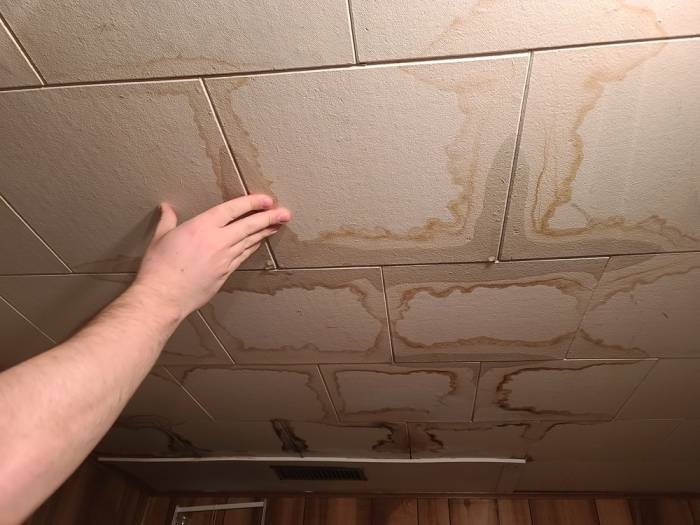Want to know about the Suspect Mold Behind Bathroom Tile in 2024. Bathroom mold is a frequent problem that may be quite dangerous to your health in addition to being ugly. Although moisture and inadequate ventilation are often linked to the formation of bathroom mold, there are other unexpected factors that may also contribute to its development. In this post, we'll examine the surprising causes of bathroom mold and present you practical preventative measures. The lesser-known causes of mold development in bathrooms will be discussed, ranging from unseen moisture sources to insufficient insulation. You may provide yourself and your family with a mold-free, healthier environment by being aware of these reasons and putting the preventative techniques mentioned into practice. Bid adieu to the bothersome black stains and welcome to a dry, clean, and mold-free bathroom.
Indications of Dampness Beneath Tiles

Even while water damage underneath your tiles isn't always visible, there are often subtle indicators that point to a problem. One sign that there may be water below your tiles, indicating damage, is an excessive accumulation of water around the tub or shower area.
Read Also: Filler Between Bathroom Tiles NYT: Enhancing Your Bathroom Tiles
Finding Areas That Are Prone to Mold
Keeping a healthy restroom environment requires knowledge of the possible risks and signs of mold exposure. It's a proactive move to regularly check your Suspect Mold Behind Bathroom Tile for mold symptoms, such as discoloration or musty odors, since this may help you spot any mold problems early on and take appropriate action before they become serious ones.
The bathtub or shower is one place where you need be very careful. Because they are constantly exposed to moisture, these places are especially prone to the formation of mold. Particularly the grout lines between tiles have a tendency to retain moisture and develop into a haven for mold. Mold may be avoided in these locations by routinely cleaning and examining them.
1. Unknown Sources of Moisture
The bathroom floor is one place that is often disregarded. Gaps or cracks in the flooring may let water seep underneath, producing a moist environment that encourages the development of mold. Moisture accumulation may be avoided by routinely checking the floor and taking care of any problems, such as resealing tiles or fixing cracks.
Remember to be mindful of any pipes or plumbing devices that are concealed inside your walls. Mold may grow easily in concealed water damage caused by burst pipes or malfunctioning plumbing. To stop mold from growing, it's critical to take quick action to correct any leaks or water damage, stop the source of the issue, and completely dry the affected areas.
2. Insufficient Airflow
Inadequate ventilation is one element that leads to bathroom mold growth that is often disregarded. A moist atmosphere that is perfect for the development of mold is produced in bathrooms with inadequate ventilation when steam and humidity from hot baths or showers build up. The moisture in the air cannot leave without enough ventilation, which causes it to stick to surfaces and promote the growth of mold spores.
It's essential to make sure your mold behind bathroom tile has enough ventilation in order to avoid this problem. This may be accomplished, for example, by adding a ventilation fan. This fan need to have adequate force to remove the damp air from the space, lowering the humidity and lowering the possibility of mold formation. To guarantee that moisture is actively removed from the air, don't forget to turn on the fan both during and after each shower or bath.
3. Leaky Plumbing and Fixtures

Plumbing and fixture leaks are well-known causes of bathroom mold development. Mold may grow easily in the ideal conditions created by even a little, undetectable leak. Water may gather in places that are out of your line of sight, such as behind walls or under floors, due to leaky faucets, showerheads, toilets, or pipelines. Mold spores flourish in these concealed moisture sources like a dream come true.
It is imperative that leaks be addressed as soon as there are indications of water damage or leaks to avoid mold issues. Look out for musty odors, warped or moist flooring, and discolored areas on walls or ceilings. These can be signs of a leak in your plumbing or bathroom fixtures. Ignoring these indicators may eventually result in expensive repairs as well as the spread of mold.
You May Also Like: 10 Essential Elements for Airbnb Master Bedroom Design
4. Inadequate Insulation
Unexpectedly, inadequate insulation may also lead to mold growth in bathrooms. Mold development in your bathroom may be greatly influenced by the quality of the insulation, even though this may not be immediately apparent. A buildup of condensation brought on by inadequate insulation might provide the ideal conditions for the growth of mold.
5. Ignored Upkeep
Neglected upkeep is one part of Suspect Mold Behind Bathroom Tile prevention that is often disregarded. Typically, when we consider bathroom maintenance, we concentrate on keeping everything tidy and functional. On the other hand, various upkeep duties are essential to stopping the formation of mold.

